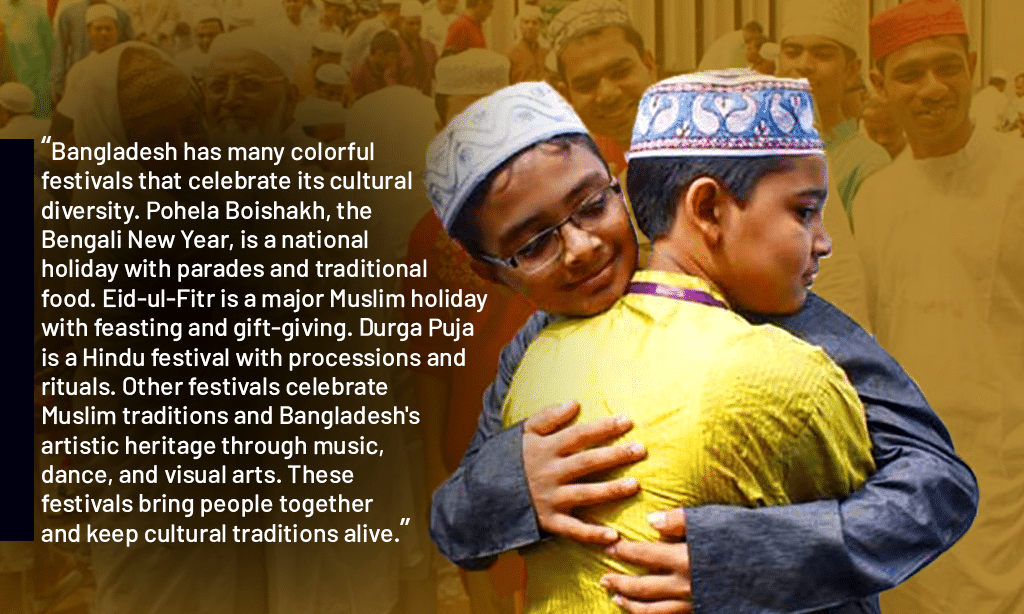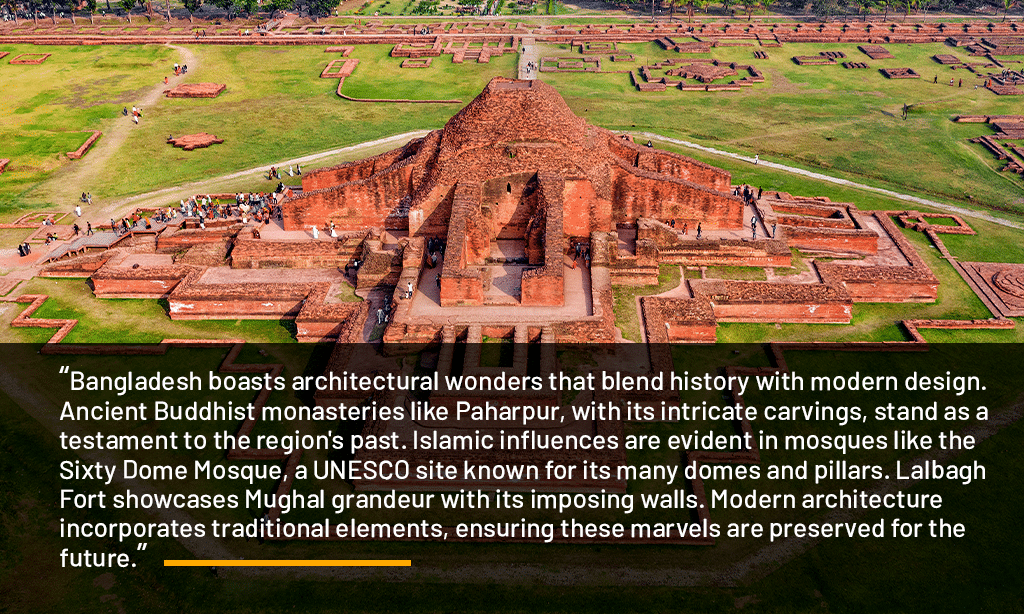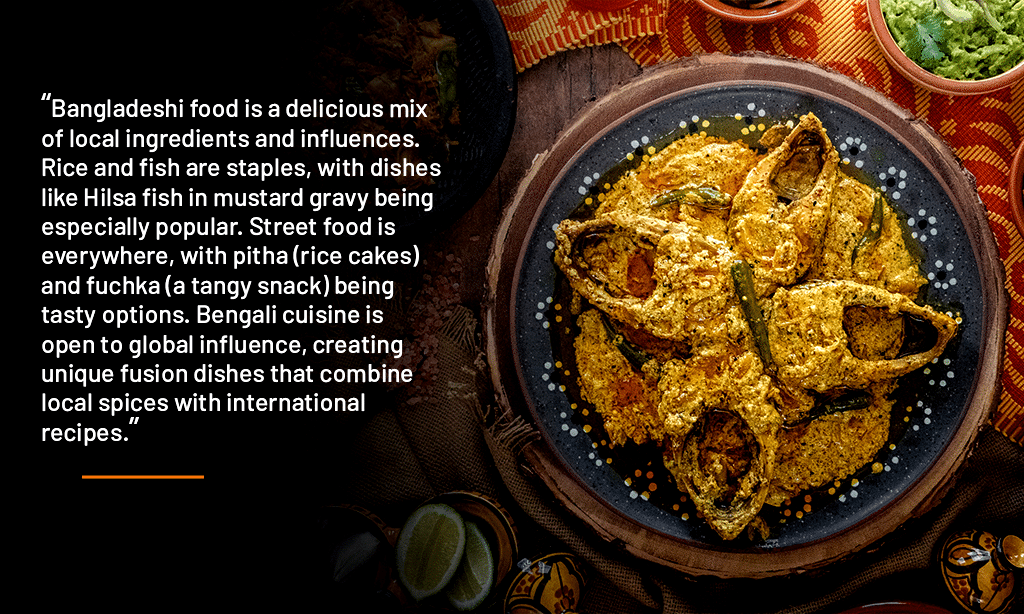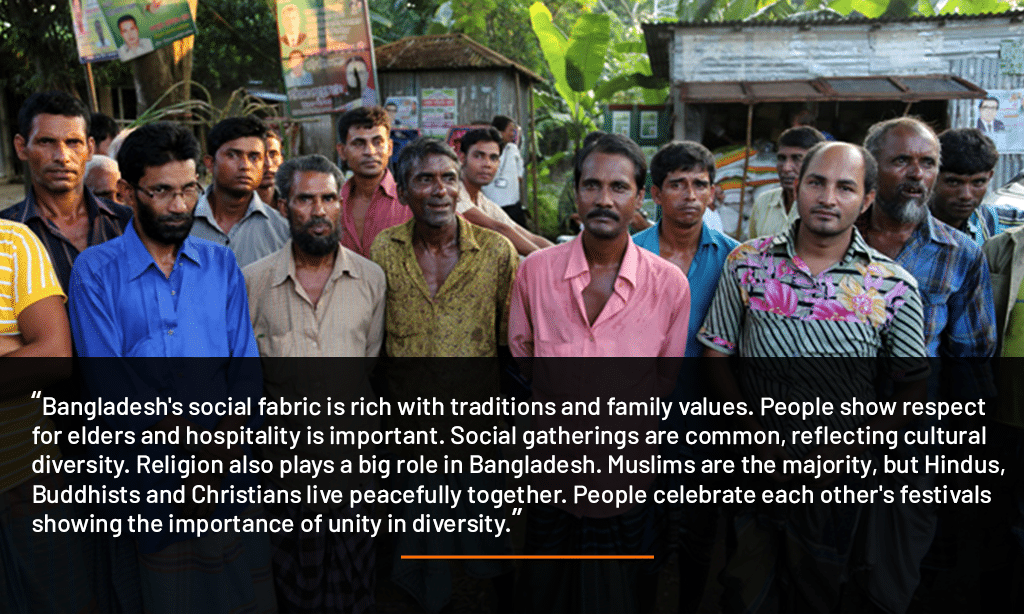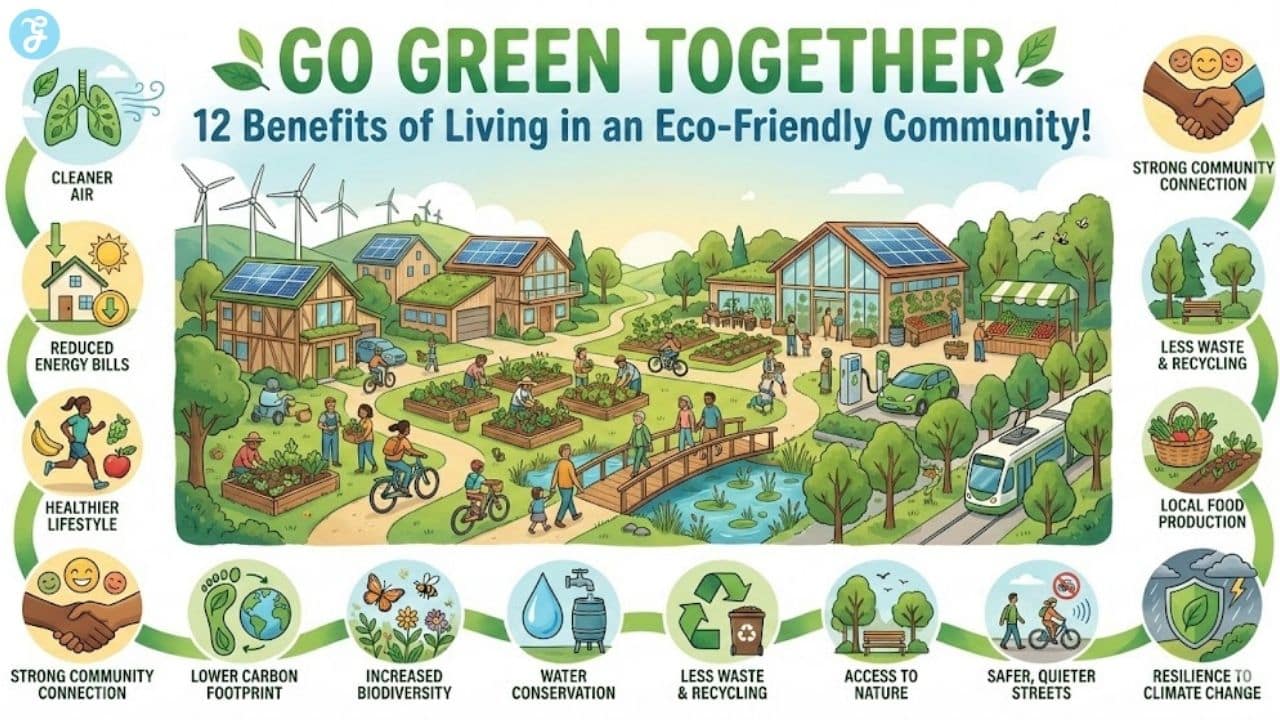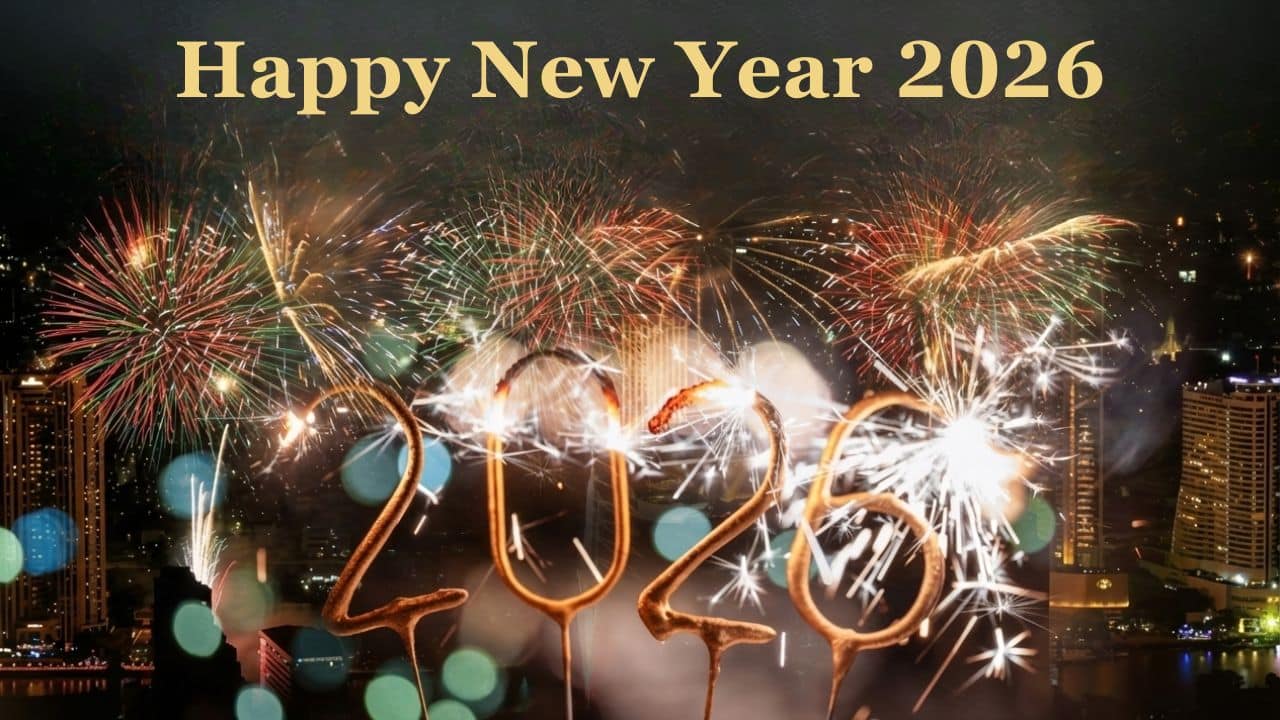The cultural landscape of Bangladesh is complex and enchanting, serving as a vivid reflection of the nation’s long and storied history. A tapestry woven from threads of various religions, traditions, and ethnic groups, the country’s cultural heritage is marked by a blend of indigenous practices and outside influences. It is a heritage that includes the profound mysticism of Baul music, the poetic symmetry of classical dances, and the intricate beauty of artistic crafts. All of these testify to the vibrant creativity and expressive power inherently possessed by the Bangladeshi people.
Bangladesh’s cultural diversity can be witnessed throughout its bustling cities and serene rural landscapes. Here, the convergence of food, music, art, and architecture speaks to a shared identity that is celebrated across numerous festivals and daily practices. Each aspect of this culture, from the grandeur of historical mosques and temples to the intimate family gatherings during traditional feasts, contributes to the dynamic social fabric. This allows Bangladesh to stand as a country rich with heritage that both honors its past and continues to evolve.
Historical Context and Cultural Evolution
Bangladesh’s cultural heritage is a vivid tapestry woven from the threads of its rich historical past and diverse cultural influences. As we explore this evolutionary journey, we dive into the nation’s transition from ancient empires’ influence to its current distinct cultural identity, shaped through epochs of significant change.
Influence of Ancient Empires
South Asia has been a cradle for various ancient empires that have left indelible marks on the cultural fabric of Bangladesh. Notably, the Maurya and Gupta Empires introduced advanced administrative systems and cultural developments that resonated through rural life. Artistic and intellectual pursuits flourished, setting foundational cultural precedents.
The Mughal Era’s Legacy
The consolidation of the Mughal Empire brought profound architectural heritage and refinement in cultural norms. Mughal contributions to the region encompass monumental structures that showcase intricate designs and sophisticated urban development. Forts, palaces, and mosques from this era continue to be significant symbols of Bangladesh’s historical significance.
British Colonial Impact
When the British East India Company annexed the region, it marked the beginning of an era that profoundly affected every aspect of life. The introduction of Western education and legal systems redefined cultural and social development. Although it was a period of exploitation, it left a complex legacy of English influence on the country’s administrative and educational frameworks.
Post-Independence Cultural Flourish
Following independence in 1971, Bangladesh has nurtured its cultural heritage with conscious efforts to preserve and promote its historical assets and rural traditions. The post-independence era witnessed a surge in cultural self-awareness, with efforts to revitalize folk arts, language, music, and traditions that embody the nation’s spirit of resilience and diversity.
Language and Literature
In Bangladesh, the tapestry of language and literature is vibrant, weaving a story of cultural identity and intellectual legacy. From the Bengali language’s widespread use to the seminal works of literary icons such as Rabindranath Tagore and Kazi Nazrul Islam, Bangladesh’s linguistic and literary realms are rich with diversity and historical significance.
Bengali Language and Dialects
Bengali, or Bangla, is the lingua franca of Bangladesh and is pivotal to the nation’s cultural identity. It is the world’s seventh-most spoken native language. Bangla has several dialects that vary regionally, adding to the language’s richness. These dialects often reflect the social and cultural nuances of different communities within Bangladesh.
Literary Greats: Tagore and Nazrul
Rabindranath Tagore and Kazi Nazrul Islam are luminaries of Bengali literature. Tagore, the first non-European to win the Nobel Prize in Literature, is renowned for his versatile poetic forms and profound prose. Meanwhile, Kazi Nazrul Islam, recognized as the national poet of Bangladesh, captivated hearts with his rebellious poetry and nationalism during the early 20th century. Their works remain an integral part of education and cultural expression in Bangladesh.
Education and Language Policies
The government of Bangladesh prioritizes education with a strong emphasis on the Bengali language, reflecting its significance in national identity. Policies mandate the use of Bangla as the primary medium of instruction in government institutions. Additionally, several languages in Bangladesh are vulnerable due to the small number of speakers. Hence, language preservation has become an area of focus for educational and cultural sustainability.
Cultural Celebrations
In Bangladesh, the vibrancy of cultural celebrations is evident through its colorful and diverse festivals. These occasions display a tapestry of customs steeped in tradition, uniting people across the nation.
Major Festivals of Bangladesh
Pohela Boishakh: Celebrated as the Bengali New Year, Pohela Boishakh marks the start of the new harvest season. Festivities include vibrant parades, folk songs, dances, and the enjoyment of traditional Bengali foods. It’s a national holiday that encapsulates the spirit of Bangladesh.
Eid-Al-Fitr: Following the Islamic month of Ramadan, Eid-Al-Fitr is one of the most significant religious festivals. Eid fosters a strong sense of community through special prayers, feasts, and charity.
| Festival | Date (2024) | Activities |
|---|---|---|
| Pohela Boishakh | April 14 | Parades, Cultural Shows, Traditional Cuisine |
| Eid-Al-Fitr | April 10* | Prayers, Gift-giving, and feasts |
*The date may vary based on the lunar calendar.
Religious Ceremonies and Rituals
Durga Puja: This is a major Hindu festival in Bangladesh, celebrating the victory of Goddess Durga over the evil buffalo demon, Mahishasura. The five-day event showcases elaborate worship rituals and processions, portraying religious harmony.
Muslim rituals also take center stage throughout the year, with Eid-Al-Adha, the festival of sacrifice, and Muharram, commemorating the martyrdom of Hussein ibn Ali. Both festivals are observed with communal prayers and respective traditional rites.
Arts and Performing Arts Festivals
Festivals centered on the arts are abundant in Bangladesh. They celebrate the country’s rich artistic heritage, from music and dance to painting and literature. Cultural programs often accompany major religious festivals, where performers don traditional attire and engage the audience with heartwarming displays of local talent.
These celebrations are a testament to the resilience and vitality of Bangladesh’s intangible cultural heritage, ensuring that the arts remain a thriving part of community life.
Artistic Expressions
Bangladesh’s cultural canvas is vibrant with artistic expressions that encompass both traditional and contemporary art forms, showcasing a sophisticated tapestry of creativity that stretches back centuries. This rich artistic heritage includes an impressive array of visual arts, textiles, and performance arts that continue to evolve while maintaining deep-rooted cultural significance.
Traditional and Modern Arts
Bangladeshi art seamlessly blends the traditional with the modern. The country’s history has seen the flourishing of various art forms such as pottery, which not only serve utilitarian purposes but also stand as a testament to the country’s aesthetic sensibilities. The vibrant art scene includes both age-old techniques and contemporary artistic movements, each narrating unique facets of Bangladeshi life and ethos.
Craftsmanship: Weaving and Embroidery
Textiles and Embroidery:
- Jamdani Weaving: A symbol of Bangladeshi heritage, this handloom woven fabric is known for its intricate patterns and labor-intensive production process, making each piece a work of art.
- Nakshi Kantha: Traditional embroidered quilts that tell stories through their elaborate designs, often crafted by rural women, integrating both utility and artistry.
The prowess of Bangladeshi artisans in weaving and embroidery captures the essence of the country’s artistic dexterity. Each stitch and weave carries forward an ancestry of skills, making these crafts not just items of aesthetic pleasure but carrying the weight of cultural identity.
Performing Arts: Music and Dance
Music:
- Baul Music: A soulful and mystical genre of Bangladeshi music performed by Bauls, portraying themes of love, humanity, and devotion through their heartfelt renditions.
Dance:
- Regular dance performances are a spectacle of color and storytelling, with dancers using expressive movements to convey tales of myth, history, and social narratives.
These performing arts are both a reflection of Bangladesh’s societal values and an open canvas for artistic expression. Through music and dance, artists narrate stories and emotions, engaging audiences in a rich cultural dialogue.
Architectural Marvels
Bangladesh’s architectural landscape is a testament to its rich cultural tapestry, where ancient history and Islamic artistry blend with modern design. Each structure tells a story of time and tradition, with some gaining recognition as UNESCO World Heritage Sites.
Ancient Ruins and Temples
The ruins of ancient Buddhist Viharas at Paharpur can be considered architectural marvels, reflecting a rich heritage that dates back to the 8th century. Paharpur, a UNESCO World Heritage site, is home to the Somapura Mahavihara, one of the largest monasteries south of the Himalayas. The intricate carvings and terracotta plaques evoke the scholarly and religious history that it once hosted.
- UNESCO World Heritage Site: Somapura Mahavihara
- Established: 8th Century
- Location: Paharpur, Bangladesh
Islamic Architecture: Mosques and Forts
With the introduction of Islam to Bengal came distinct architectural styles notable in the construction of mosques and forts. The Sixty Dome Mosque in Bagerhat is an iconic example, also a UNESCO World Heritage site, renowned for its 60 pillars and 77 domes, each symbolizing the mosque’s architectural ingenuity.
Lalbagh Fort in Dhaka offers another glimpse into the Mughal era’s grandeur with its imposing walls and elegant interiors. Although it remains incomplete, Lalbagh Fort is an essential part of the architectural heritage in Dhaka, signifying the historical significance of Islamic art and architecture in the region.
- Sixty Dome Mosque:
- UNESCO Status: World Heritage Site
- Features: 60 pillars, 77 domes
- Location: Bagerhat, Bangladesh
- Lalbagh Fort:
- Status: Key historical monument
- Features: Mughal architectural elements
- Location: Dhaka, Bangladesh
Integration of Modernity and Tradition
Modern Bangladeshi architecture aims to harmonize past influences with contemporary needs. This integration is evident in the use of traditional motifs and designs in new constructions, ensuring the country’s architectural marvels are both preserved and enhanced for future generations. The commitment to sustainable urban development is visible in larger urban areas like Dhaka, where the heritage of the past coexists with the innovations of the present.
Culinary Diversity
Bangladesh’s culinary scene is a rich tapestry woven from the grains of locally grown rice, the bounty of its rivers, and the vibrant spices found in every home and marketplace. It offers an authentic mosaic of flavors reflective of the nation’s diverse heritage.
Local Delicacies and Street Food
Stroll through the bustling streets of Bangladesh, and you’re sure to encounter an array of street food reflecting the heart of its culinary culture. Pitha, a variety of rice cakes, is an especially popular delight. A walk along these crowded byways also brings you to carts laden with fuchka, a tangy, spicy, and savory explosion of taste.
- Jhal Muri: Puffed rice mixed with mustard oil, chili, and spices.
- Singara: Deep-fried pastries filled with vegetables or meat.
Traditional Bengali Cuisine
The heart of Bengali cuisine lies in its use of rice and fish, staples that denote both cultural and geographical narratives. Hilsa fish, especially when prepared as Shorshe Ilish (hilsa in mustard gravy), is a cherished dish expressive of Bangladeshi identity. Equally noteworthy is the quintessential biryani, a layered rice dish typically reserved for special occasions.
- Rice: Staple food, often served with lentils.
- Fish: Varieties such as hilsa are central to the diet.
Fusion Foods and Global Influences
Bangladesh, while firmly rooted in its traditions, has also embraced global influences, creating a tapestry of fusion foods. These cross-cultural cuisines incorporate Bengali spices into worldwide recipes, presenting a unique interpretation that caters to both local and international palates.
- Chickpea Batter Creations: Seen in snacks that blend local spices with pickled influences.
- Western Fast Food: Localized to suit Bengali tastes with added spices and flavors.
Social Fabric and Everyday Life
In Bangladesh, the social fabric is intricately linked to a rich tapestry of family values, colorful fashion, and diverse religious practices. These facets collectively showcase the nation’s cultural diversity and commitment to unity.
Family Values and Social Customs
Traditions play a central role in the social customs of Bangladesh. Families are typically large and adhere to a patriarchal structure where elders are respected and their guidance is valued. Social customs include numerous rituals that mark significant life events, such as births, weddings, and funerals. Values like hospitality and community cohesion are paramount, with vibrant gatherings commonplace, reflecting the nation’s deeply rooted cultural diversity.
- Major social customs:
- Hospitality
- Respect for elders
- Community bonding
Festive Attire and Fashion
Bangladesh’s fashion is a reflection of its cultural diversity, with the traditional sari being a prominent component of women’s festive attire. Saris are often worn during celebrations and are indicative of regional identities. Men frequently don traditional panjabis for festive occasions. The use of vibrant colors and elaborate designs in clothing is widespread, signifying the festive spirit and diversity of the nation’s cultural tapestry.
- Examples of traditional attire:
- Sari for women
- Panjabi for men
- Lungi for casual wear
Role of Religion and Diversity
The role of religion in Bangladesh contributes to the cultural diversity and unity of its people. The majority are Muslim, but there are significant Hindu, Buddhist, and Christian communities that live harmoniously. Festivals such as Durga Puja, celebrated by Hindus, and Buddha Purnima for Buddhists, are respected and enjoyed by people from various religious backgrounds. This intersection of faiths reinforces the value placed on diversity and unity, demonstrating the nation’s inclusive social fabric.
- Religious demographics:
- Muslim: Majority
- Hindu: Significant minority
- Buddhist & Christian: Small communities
Sustainable Development and Global Integration
In the context of Bangladesh’s rich cultural heritage, sustainable development and global integration represent crucial aspects that help preserve cultural identity while fostering economic growth and modernity.
Government Policies and Cultural Preservation
The Government of Bangladesh has acknowledged the intricate connection between cultural preservation and sustainable development. Policies are in place that aim not only to protect the vast array of cultural expressions but also to integrate these practices into the broader agenda of economic advancement. For instance, the Ministry of Cultural Affairs works in tandem with the Ministry of Environment, Forest and Climate Change to ensure that development projects do not compromise the natural and cultural heritage.
- Key Policy Initiatives:
- Preservation of historical sites and promoting local arts.
- Balancing urban development with cultural site conservation.
Tourism and Cultural Exchange
Tourism plays a pivot role in both celebrating diversity and contributing to the economy. With policies that encourage responsible and sustainable tourism, visitors can experience Bangladesh’s unique traditions in a manner that supports preservation and fosters cultural exchange.
- Impacts of Tourism:
- Direct contribution to local economies.
- Enhancement of cultural awareness and global integration.
Tourism not only serves as a window to the world for Bangladesh’s diverse traditions but also acts as a channel through which the dynamism of global cultures can be introduced to the local communities.
Technological Advancements and Cultural Adaptations
Technological advancements have enabled the safeguarding of cultural artifacts and traditions, facilitating a harmonious blend of modernity and heritage. Digitalization efforts, such as the creation of online archives and virtual tours, make cultural heritage more accessible both domestically and internationally.
- Technological Measures:
- Digitization of cultural records.
- Virtual reality tours of heritage sites.
These technologies serve a dual purpose; they protect the integrity of cultural sites and artifacts, while adapting to and integrating with contemporary global practices.
Environmental and Geographic Influence
Bangladesh’s landscape, rife with rivers and rich in biodiversity, shapes its cultural heritage through waterways, natural beauty, and agricultural customs.
The Significance of Waterways
Waterways form the lifeblood of Bangladesh, not only facilitating transportation and trade but also influencing the everyday lives of its people. The Padma (Ganges), Jamuna (Brahmaputra), and Meghna rivers converge in the country, creating a rich aquatic network that is central to the cultural and economic activities. Villages and cities alike develop along these rivers, with the local populace closely tied to the water for fishing, irrigation, and transportation.
Key Waterways:
- Padma (Ganges)
- Jamuna (Brahmaputra)
- Meghna
Biodiversity and Natural Beauty
One of the most renowned natural sites in Bangladesh is the Sundarbans, the largest mangrove forest in the world and a UNESCO World Heritage site. Hosting an array of wildlife, including the iconic Bengal tiger, this area exemplifies the deep connection between the landscape and cultural identity. Additionally, the lush countryside and diverse ecosystems across the country foster a sense of pride and responsibility among the people to preserve the natural beauty and resources.
Notable Natural Sites:
- Sundarbans Mangrove Forest
- Cox’s Bazar Beach
- Chittagong Hill Tracts
Agriculture and Rural Landscapes
The fertile plains and abundant water have made agriculture a central feature of Bangladesh’s economy and rural life. The majority of Bangladeshis live in the countryside, working the land that yields rice, jute, and various other crops integral to the nation’s sustenance and culture. Places like Mahasthangarh, an ancient archaeological site, testify to the enduring history of human settlement and agricultural practice in the region.
Main Crops:
- Rice
- Jute
- Vegetables
Creative and Performing Arts
Bangladesh’s cultural panorama is enriched by its vibrant creative and performing arts, which are an integral part of its cultural identity and contribute significantly to preserving the nation’s heritage. This section delves into the heart of Bangladeshi folk music, traditional theater, and the burgeoning film industry.
Folk Music and Baul Tradition
Baul music, known for its enchanting melodies and philosophical lyrics, represents a long-standing folk tradition. Primarily advanced by wandering minstrels known as Bauls, their performances are more than entertainment; they are a way of life, intertwining spiritual teachings with music and gaining UNESCO’s recognition for its cultural significance.
- Instruments: The ektara (a one-stringed instrument), the dotara (a four-stringed instrument), flutes, and drums are central to Baul performances.
- Themes: Baul songs often discuss themes of love, humanity, and devotion, conveying messages through a mix of allegory and straightforward language.
Traditional Theater and Jatra
Jatra, a form of traditional Bengali folk-theater, combines drama, music, and dance to tell stories, often rooted in folklore, myth, and history. It is known for:
- Vibrant Performances: Characterized by bold dialogues, powerful music, and dramatic storytelling.
- Social Reach: Historically accessible to diverse audiences, transcending social stratifications and fostering communal unity.
Jatra plays a critical role in the performing arts landscape of Bangladesh, instilling traditional narratives and moral lessons through its expressive format.
Contemporary Bangladeshi Cinema
The film industry in Bangladesh has evolved significantly, embracing contemporary stories while honoring its cultural roots. It features:
- Cinematic Growth: A blend of mainstream, parallel, and independent films showcasing the country’s realities and imaginative tales.
- Global Recognition: Bangladeshi cinema gains accolades for artistic expression and social relevance at international film festivals, reflecting the nation’s creative spirit.
This cultural manifestation offers a window into the country’s evolving artistic sentiments and fosters a global appreciation for Bangladesh’s modern creative endeavors.
Influence on Fashion and Textiles
Bangladesh’s rich cultural tapestry is vividly reflected in its fashion and textile industry, where traditional methods meet contemporary styles. The evolution of the Bangladeshi sari, the artistry of handloom and Jamdani weaving, and the international reach of the fashion industry underscore the vibrant diversity of Bangladeshi textiles.
The Evolution of the Bangladeshi Sari
The sari, a garment both traditional and contemporary, is a testament to Bangladesh’s fashion heritage. Every sari tells a story of craftsmanship and regional identity, often characterized by distinctive patterns and colors. The styles have evolved to meet the needs and tastes of modern-day wearers while maintaining the essence of its traditional roots.
Handloom and Jamdani Weaving
Bangladesh is renowned for its handloom fabrics and intricate Jamdani weaving. This centuries-old craft, declared a UNESCO Intangible Cultural Heritage, involves a delicate process of hand weaving. This process often results in ethereal patterns woven directly into the fabric. These textiles are not just pieces of cloth, but carriers of tradition and skill passed through generations.
Fashion Industry’s International Reach
The fashion industry of Bangladesh has made considerable strides on the global stage. Bangladeshi designers and textiles have gained international acclaim by combining traditional techniques like Jamdani weaving with modern designs. They showcase their rich heritage at fashion weeks and in boutiques worldwide. The industry’s growth has also shone a light on the versatility and innovation within Bangladeshi textiles and handicrafts.
Cultural Resilience and Unity
Bangladesh’s cultural heritage is an emblem of unity and resilience, where a diverse population weaves a single narrative of solidarity. The nation demonstrates remarkable cultural resilience by turning adversities into bonds of peace. It also utilizes its rich intangible cultural heritage as a bridge between varied cultural roots.
Overcoming Adversity and Building Peace
In Bangladesh, historical episodes of violence and struggle have been catalysts for cultural solidarity and peace. Through festivals and community gatherings, citizens unite, displaying resilience that strengthens the social fabric. The country’s approach to adversity highlights a collective identity that emphasizes harmony over discord.
Diverse Population and Shared Cultural Roots
The population of Bangladesh is a tapestry of ethnic groups, each contributing unique threads to the nation’s cultural diversity. Resilience is shown through the recognition and celebration of different traditions and cultural expressions. This shared cultural root system provides a foundation for unity, offering common ground amidst diversity.
Expressions of Identity Through Culture
Cultural activities in Bangladesh express collective identity and individual uniqueness. They are powerful tools for fostering unity. Music, dance, and folklore are not only forms of entertainment but vehicles for resilience, reinforcing a sense of belonging. This celebration of intangible cultural heritage bolsters community spirit and underscores the nation’s commitment to preserving cultural diversity.
Conclusion
Bangladesh stands as a testament to a rich and varied cultural heritage, forged through centuries of history and a confluence of different civilizations. With roots that stretch back to the ancient Indus Valley Civilization, the cultural fabric of Bangladesh is woven with threads of indigenous traditions alongside Hindu, Buddhist, and Islamic influences. These cultural strands are evident in the country’s customs, language, arts, and architecture.
The cultural landscape of Bangladesh is characterized by its pluralism and diversity. Each tradition and celebration, from the regional and cultural aspects of Eid-ul-Fitr to the architectural splendors like the Sixty Dome Mosque in Bagerhat, enriches the Bangladeshi identity. The nation’s ability to embrace diversity while fostering unity is not only a cultural achievement but also a social strength.
Furthermore, institutions such as UNESCO recognize the global significance of Bangladesh’s intangible cultural heritage. This acknowledgment preserves the nation’s past and highlights its role in the ongoing cultural dialogue, stimulating both national pride and international interest.
In safeguarding its cultural legacy, Bangladesh continuously evolves, blending historical richness with contemporary progress. From the arts to the everyday practices of life, Bangladesh’s cultural heritage is a vibrant, ever-unfolding narrative, offering an invaluable insight for both the country’s citizens and the global community.




